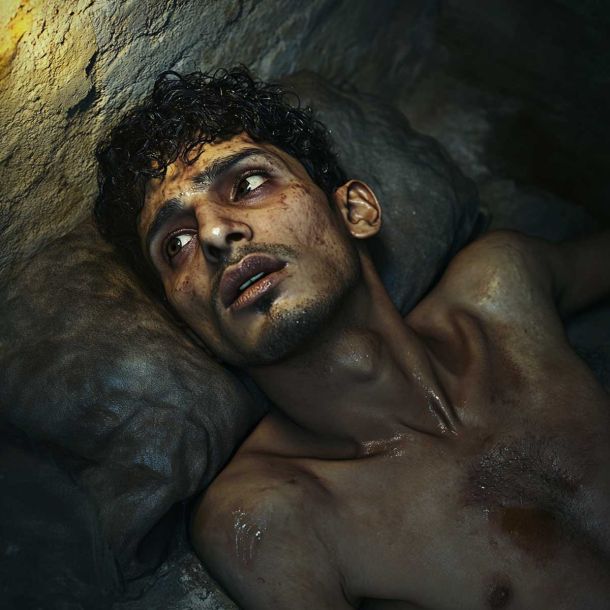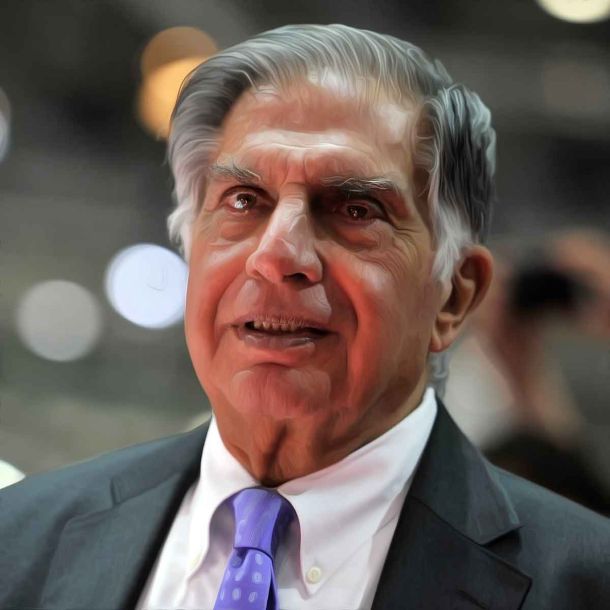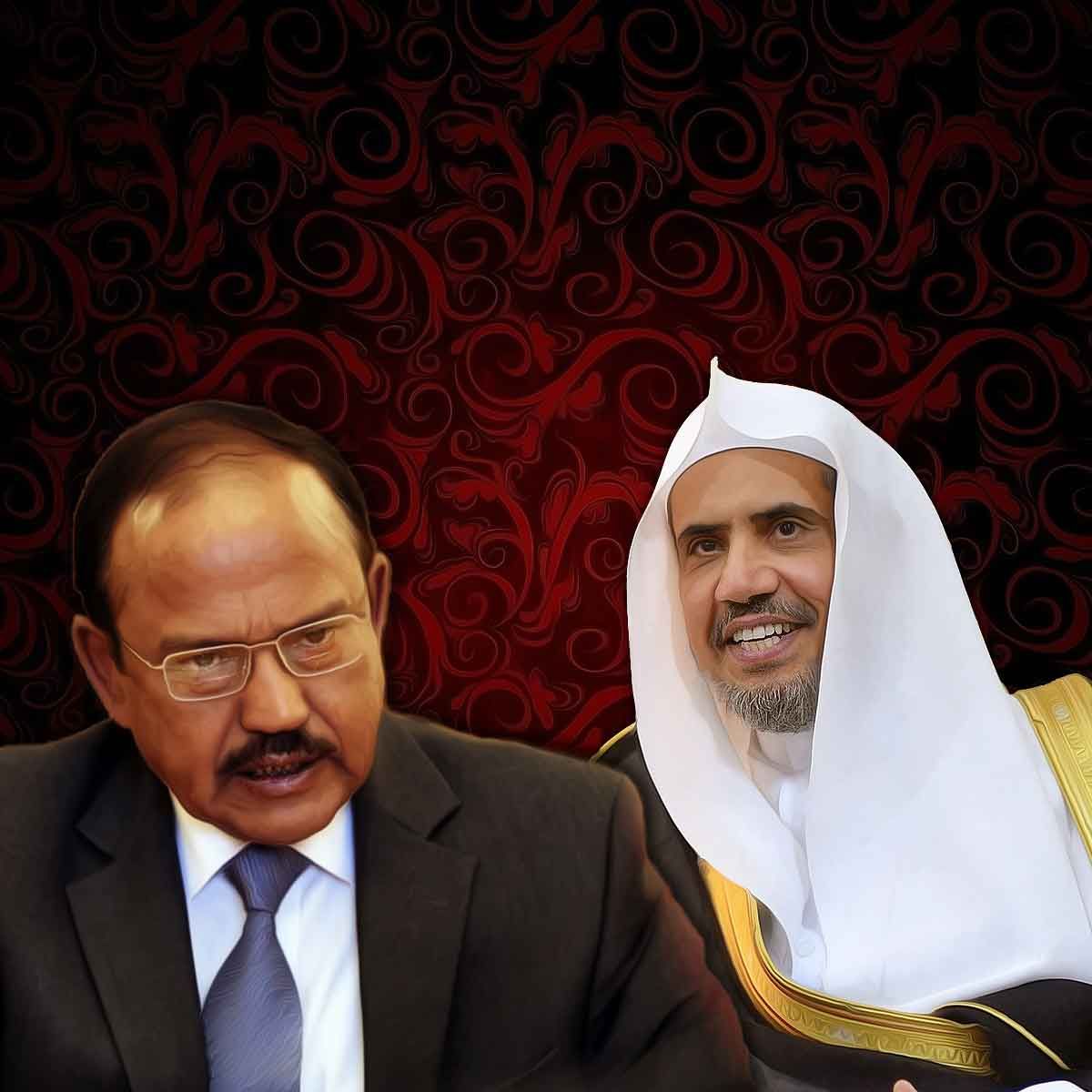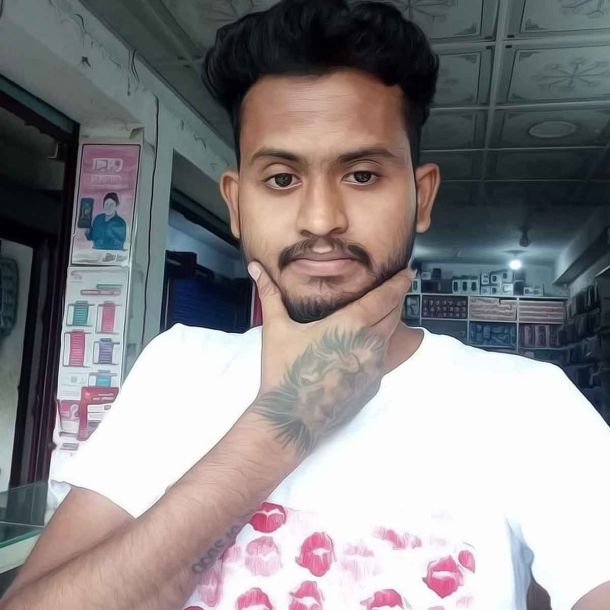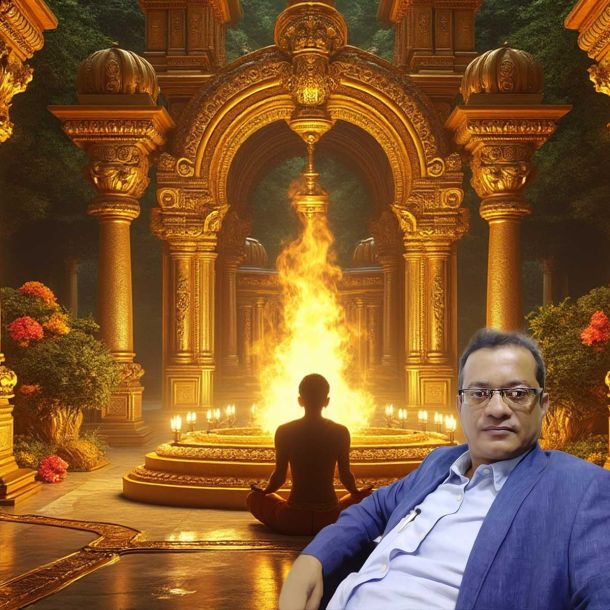MORE COVERAGE
The Communist Conspiracy - Hindu Society Under Siege
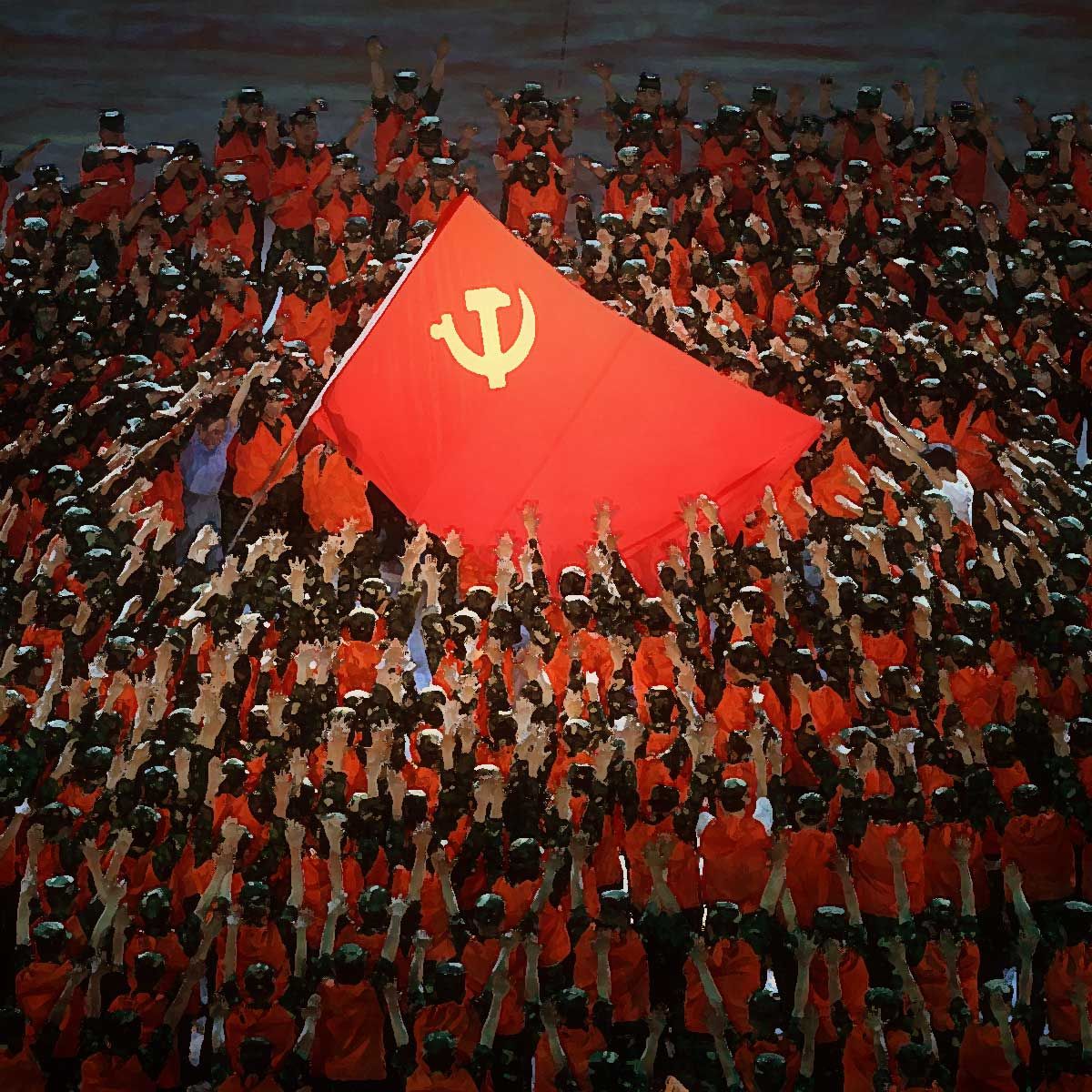
This article was written in 1981. Now the Soviet Union has disappeared from the scene and the Communist movement in India does not know whom to serve. But its hostility towards Hindu society and culture remains undiminished. It is quite on the cards that this mercenary outfit will be bought over, in due course, by some other power or powers hostile to positive Indian nationalism. A Communist cannot help being a traitor to his country and his people.
We have so far discussed the role of the residues of foreign rule in India vis-a-vis Hindu society. We have characterised Islamism as malevolent, Christianism as mischievous, and Macaulayism as mild, though like a slow poison. Now we shall take up Communism which, though not exactly a residue of foreign rule, is yet a foreign imposition of the most malignant character.
But before we proceed, we wish to make it clear that nothing in this article should be construed as a hostile criticism of Indo-Soviet relations. Our friendship with the Soviet Union has matured in the midst of a fast-moving world. We value that friendship, though we would like to emphasize that the Soviet Union needs India’s friendship as much as India needs hers. We also warn that neither the Soviet Union nor the Communist movement in our country should be permitted to close our other options while we are faced and have to deal with American interventionism.
Though Communism in India cannot be characterised as a residue of the British rule, the British Government did make some substantial contributions to its growth. In the thirties, that Government encouraged non-Communist revolutionaries in its jails to read Communist literature. This was done in order to wean them away from terrorism. Many of them came out as convinced Communists while still wearing the halo of national heroes. Again, during the Second World War, that Government partronised, financed and fraternised with the Communist Party of India and helped it attain the stature of an independent political party.
 BT Ranadive, G Adhikari, and PC Joshi at a meeting of the Polit Bureau of the Communist Party of India at the CPI headquarters in Bombay, 1945 |
Ideologically, Communism in India is, in several respects, a sort of extension of Macaulayism, a residue of the British rule. That is why Communism is strongest today in those areas where Macaulayism had earlier spread its widest spell. That is why Macaulayism has always been on the defensive and apologetic vis-a-vis Communism. Macaulayism has always tried to understand and explain away the misdeeds of Communism in this country. It has sadly deplored, if not condoned, as misguided idealism even the most heinous crimes of the Communists. The long record of our parliamentary debates is a witness of how, after the death of Sardar Patel, die treasury benches have always evinced an awed deference towards utterly unparliamentary and downright demagogic vituperations from Communist members.
This ideological affinity between Communism and Macaulayism is ultimately derived from a common source in the modern West-materialistic metaphysics, evolutionistic sociology, utilitarian ethics, hedonistic psychology, etc. In this world-view, man is essentially a homo fabricus, a tool-maker or mechanic. A centralised economy and an urbanised society are a natural follow-up of this world-view. In this larger ideological context, Marxism is a logical culmination of Capitalism. Marx reserved his choicest praise for Capitalism and his choicest abuse for what he denounced as Utopian Socialism. The only crime of this other school of Socialism was that it objected to the relentless drive of Capitalism towards total mechanisation, industrialisation and centralisation, reducing the individual human being to a helpless entity.
The difference between Capitalism in the West and Communism in the East of Europe arose because Capitalist societies retained philosophical eclecticism and political pluralism as expressed in parliamentary democracy, a free press and free trade unions. Communist societies, on the other hand, froze Marxist philosophy into a closed system of orthodoxy. This led to heresy-hunting which in due course reduced Marxism to the status of a Semitic creed like Christianity and Islam. Bertrand Russell was not far wrong when he identified Communism as a Christian heresy. It has acquired all the characteristic features of the Christian Church such as the only Saviour, the only Revelation, the only Pope, the only priesthood, the only baptism, and the only sacraments. Communist regimes could not help becoming totalitarian enemies of human freedom.
Yet, and in spite of all ideological affinities, Communism is not a variety of Macaulayism, though the former fattens on the latter. The inspiration of Communism did not derive from the West. Its gospel as well guidance emanated from an opposite direction, the Soviet Union, except for a brief period when China also shared the honour of being a hallowed land.
This is not the occasion to dwell on the philosophy of Marxism or the strategy and tactics of Leninism or Stalinism or Maoism. Here we are dealing with the problem which Communism poses before Hindu society and culture. In any case, Communism in India, has never had much use for Marxism, Leninism, Stalinism and Maoism except as an ideological window-dressing to impress the intelligentsia at large and hoodwink the party cadres whenever the Party line has to be shifted swiftly.
 MN Roy (centre, black tie and jacket) with Vladimir Lenin (tenth from the left), Maxim Gorky (behind Lenin), and other delegates to the Second Congress of the Communist International at the Uritsky Palace in Petrograd. 1920 |
What, then, is Communism?
Scholars and historians of Communism far more competent than the present writer have documented it beyond a shadow of doubt that Communism has been an instrument of Soviet foreign policy in its drive towards world domination, particularly since Stalin emerged as the undisputed leader of the Soviet Union as well as the world Communist movement. The unmasking of Stalin as a mass-murderer by Khruschev has blown up the myth of Soviet Russia as a proletarian paradise. The split with China has splintered the world Communist monolith. But, by and large, the movement has recovered from these shocks, retained its self-righteousness and resumed its role in the service of Soviet foreign policy.
It is, therefore, natural and inevitable that Communism should come into conflict with positive nationalism in every country. India cannot be an exception. By positive nationalism we mean a nationalism which draws its inspiration from its own cultural heritage and socio-political traditions. Such a nationalism has its own way of looking at world events and evaluating the alignment of world forces. Such a nationalism is guided by its own past experience in safeguarding its interests and pursuing its goals. These interests and goals may coincide or agree with the interests and goals of Soviet foreign policy at some particular stage of world politics. But it is equally likely that they may not.
This basic dissonance between Communism and positive nationalism in India was fully and finally dramatised during the Second World War. The Communist Party of India had, since its inception, opposed British imperialism in India and stood for its immediate and violent overthrow. The Party had also opposed the Muslim League which it had characterised as a collaborationist conspiracy of landed interests. In the eyes of Indian freedom fighters, therefore, the Party represented a revolutionary fringe of the nationalist movement. The Congress Socialist Party even allowed its platform to be used by the Communist Party of India which was working under a British ban. But the curtain was raised suddenly in 1941 when Hitler invaded the Soviet Union and the real face of Communism was revealed for all who could see.
The Congress leadership had tried to negotiate a settlement with the British for two long years. Finding the British attitude adamant, the Congress decided in August 1942 to launch the Quit India Movement. The Communists in the Congress opposed the Quit India resolution in the AICC Session at Bombay. They propounded that the imperialist war had been transformed into a people’s war simply because the Soviet Union had been invaded by an enemy of Britain.
 |
The freedom movement forged ahead under its own inspiration. But the Communist Party of India moved full steam in the opposite direction. British imperialism now became British bureaucracy for the Communists, the Muslim League a spokesman of the Muslim mass upsurge, and the demand for Pakistan a legitimate expression of Muslim nationalism which the Congress should concede immediately. The rest of the story is well-known-the story of how the freedom movement was branded as a movement for collaboration with Fascism, how Subhash Chandra Bose was denounced as a Nazi dog and a Japanese rat, how Communist cadres spied for the British secret police on Socialists and Forward Blocists who had organised an underground movement, and how the Communist intellectuals like Adhikari and Ashraf blueprinted the case for Pakistan with facts, figures, academic arguments and sentimental slogans.
The Communist contribution towards the creation of Pakistan was next only to that of the Muslim League. The Soviet Union was in search of a base from which it could operate for capturing the rest of India after the departure of the British. That plan did not succeed and Pakistan became a base for American interventionism instead. Ever since, the Communists in India have been blaming the Partition on those very forces of positive nationalism which had fought the Muslim League tooth and nail. Communist slogans may change but their hostility to positive nationalism is permanent.
The source of positive nationalism in India is Sanãtana Dharma and the long saga of Hindu history. Hindu society provides the only base for positive nationalism. The Muslim and the Christian communities can share in positive nationalism only by revising the premises of their exclusive creeds in favour of the universal principles laid down by Sanãtana Dharma. Communism in India is bent upon destroying Sanãtana Dharmaand Hindu society. It is, therefore, in its interest to prevent the Muslims and the Christians from moving towards the mainstream of positive nationalism. This is a point with which we shall deal when we expose the united front between various forces hostile to the Hindus.
Here we shall simply specify some prime targets of Communism in its battle against Hindu society and culture. They are as follows:
- The first and foremost target of Communism is Sanãtana Dharma enshrined in Hindu literature and made living by a long line of saints, mystics and bhaktas. Communism ridicules all this wealth of unrivalled spiritual splendour as a conglomeration of sterile superstition, obnoxious obscurantism and puerile priescraft;
- Next, Communism makes an aggressive move towards Hindu Dharmashãstras which have their source in Sanãtana Dharma and which lay down the moral and social principles by which a wholesome social and individual life is sustained. Communism denounces these Dharmashãstrasas respositories of primitive prescriptions, Machiavellian morality, caste oppression, untouchability, degradation of women, Brahmin domination, lack of social responsibility, and what not;
- Thirdly, Communism concentrates on Hindu philosophies which expound, compare, contrast, fortify and defend the manifold metaphysical points of view flowing into several streams from the self-same Sanãtana Dharma. It condemns all these philosophies as Brahminical conspiracies to suppress the Lokãyata, the only scientific philosophy pulsating with a revolutionary principle. Rahul Sankrityayana was a great pedlar of this Communist lore among the Hindi reading public. Some of his works have been translated into other languages also. He was very enterprising indeed. He postulated that the Buddha was preaching Marxism for all practical purposes except for his unmindful lapse into the unproved doctrine of transmigration;
- Fourthly-and here Communism has really invested some herculean endeavours-it ransacks the annals of Hindu history and Hindu heroism. A whole battalion of Communist historians have been busy for years battering the walls of Hindu historiography behind which ‘Hindu communalism and chauvinism is hiding its ugly face’. They have ridiculed every hero, every period, every episode, and every precedent in which Hindus can take pride. The Golden Age of the Imperial Guptas in which Hindu achievements attained their acme in the fields of art, literature and science is dismissed as a myth by D.N. Jha whose Ancient India: An Introductory Outline has just been reprinted by the People’s Publishing House, New Delhi. Other Communist historians have portrayed Maharana Pratap, Shivaji and Guru Govind Singh as local rebels against pax moslemanica for petty personal ends. The same historians whitewash blood thirsty Islamic conquerors and despicable despots, and condone their crimes either by balancing them with great good deeds which they did in some other direction or by explaining them away as conforming to the prevailing pattern of empire-building;
- Lastly, the Communist anthropologists and sociologists dive deep into Hindu social institutions, customs, mores and manners and come up with some class interest hiding inside the core in each case. We are told that Hindu society has always been an unhealthy society except perhaps during the Vedic period when, according to Romila Thapar, our Aryan ancestors ate beef. Beef-eating by the ancient Aryans has been such an obsession with Miss Thapar that she returns to the theme again and again, even when discussing the dancing girl found in the ruins of Mohenjo-daro.
 CPI(M) General Secretary Sitaram Yechury with Prakash Karat (right), Manik Sarkar (centre) and Brinda Karat (left) at the party’s 21st National Congress in 2015. | PTI |
How hostile Communism can be to everything Hindu is proved by an incident in which SA Dange and his son-in-law, Deshpande, got involved a few years ago. Deshpande wrote quite a scholarly book in which he propounded that several important principles of modern mathematics and science (including dialectical materialism which is the greatest principle of modern science according to Communism) were first discovered by systems of Hindu philosophy, notably SãMkhya and Vedãnta. Several other Communist savants had earlier indulged in a similar exercise of casting ancient Hindu philosophies into a materialist mould. The party had paraded them as expert explorers and authentic interpreters of the revolutionary undercurrents in India’s philosophical heritage. Where Deshpande went wrong was that he took a genuine pride in the ancient Hindu past and expressed it in no mean measure. Dange himself contributed a Preface to the book and presented it as quite an academic achievement. Little did they know the consequences of what they had done. The Party came down upon them like a ton of bricks. It called a seminar, ‘Marxism on Vedanta’, in which Dange had to confess his errors and cat crow. Deshpande’s book published by a society in Bombay was withdrawn from circulation.
The methods which Communism employs in India to denigrate and denounce the votaries of positive nationalism are the standard Communist methods it uses everywhere around the world. Here we shall concretise three of its chief methods under Indian conditions:
- Communism in India has developed a language which George Orwell has described as doublespeak. In this language, the traitorous and totalitarian forces represented by the Communist movement are presented as patriotic and democratic forces, collaborators with Communism as progressive people, Islamic imperialism as secularism, and positive nationalism as Hindu communalism and chauvinism. Many people do not know how to decipher this doublespeak and are, therefore, trapped by it;1
- Communism in India constantly practises what Karl Popper so aptly expounded as the ‘conspiracy theory of society’. It goes on digging up one conspiracy after another against the working class, the peasantry, the middle class, the toiling masses, Secularism, and so on. In this scheme, it links up ‘Hindu communalism and chauvinism’ with capitalism, landlordism, forces of obscurantism, revivalism and reaction and, finally, all of them with ‘American imperialism’. The forces of ‘democracy and progress’ are then called upon to rally round the Communist movement to defeat the ‘grand conspiracy between American imperialism outside and reactionary Hindu communalism within’. This helps the Communist cadres to acquire a rare depth of perception without exercising their brains. The less they know and think, the better they feel and function. Recently, Communism has discovered a conspiracy of ‘Hindu communalism’ to kill Muslims and destroy Muslim property whenever and wherever Muslims show some signs of prosperity;
- Communism in India wields a strong-worded swearology which it hurls at its adversaries. Some samples of this swearology will illumine the venom which it can carry. During the Ranadive party- line in 1948-50, Mahatma Gandhi was ‘unmasked’ as the cleverest bourgeois scoundrel and Rabindranath as mãgeer dãlãl, that is, a pimp. But the choicest reprimand was reserved for Sardar Patel and Pandit Nehru ‘the fascist duo’. Parichaya, the prestigious Bengali monthly, came out with a long poem on the two of them ‘conspiring together in the service of American imperialism’. One of the lines exposed them as shyãlã shooarer bãcchã, birlã tatãr jãroja shontãna, that is, sons of swine and the bastard progeny of Birlas and Tatas. But, then, you cannot pin the Communists to any of their past performances. They always ‘admit their mistakes’ publicly and do a bit of chest-beating whenever they receive orders to change the Party line. At present, the bulk of Communist swearology is being mobilised against the camp of positive nationalism. People belonging to this camp are being daily denounced as communalists, chauvinists, fascist murderers of minorities, perpetrators of genocide, reactionaries and revivalists. The tone is still mild, keeping in mind how mendacious it could easily become at a moment’s notice. But there are intimations that it may resume its full powers of rhetoric as and when required.2
 |
Hindu society is basically a sane society which can smile with tolerance at every variety of venomous as well as tall talk. Hindus could have dismissed the Communists as a band of lunatics and morons, had not Communism acquired the power and prestige it enjoys in India today. Communism has, of course, fattened itself on widespread Macaulayism and a negative nationalism driven by nothing better than an anti-Western animus and inflated ideas about India’s role in world affairs. But the main strength of Communism in India springs from colossal Soviet finances which pour into its coffers through many channels and in increasing amounts. This is not the place to identify the channels through which the Soviet Union finances its fifth-column in India. Here we are concerned with what the Communist movement does with this money. The following deserve our particular attention:
- The Communist movement in India has built up the largest press in English as well as Indian languages. It runs many dailies, weeklies, fortnightlies, monthlies, quarterlies and irregular periodicals. Most of these papers and journals do not care for commercial and other advertisements which are the main source of income in normal press establishments. The losses that are incurred by these party organs run into crores of rupees every year,
- The movement controls the largest number of publishing houses. They publish Communist literature in English as well as Indian languages. Most of this literature is in the form of pamphlets, presenting the Party line on all issues of importance, national and international. Recently, Communist publishing houses have undertaken publication of heavier intellectual fare as well, provided it carries a Communist slant or is authored by a Communist or a fellow-traveller. A new line is publication of text-books, particularly on Indian history. These are prescribed by Communist professors whenever and wherever they control university departments, which is not unoften. Departments of history in the Delhi and Jawaharlal Nehru universities, for instance, have become pocket boroughs of Communism for all practical purposes. All this literature, light as well as heavy, is sold at prices which cannot meet even a fraction of the cost. The large discounts allowed to retailers increase this disparity a good deal. The publishing houses which are housed in spacious places, owned or rented by the movement, maintain large salaried staff of all levels. The losses incurred in this enterprise are also colossal;
- The movement is a cadre-based movement. It has a far-flung hierarchy of leaders and workers. All of them are paid activists. Some of them are whole-timers, others part-timers. The leaders are paid and maintained much better than the workers. But salaries and allowances of workers are not inadequate either, if we take into account the communes which the movement maintains for its activists. These expenses on salaries, rents, food, clothing, transport and sundries account for another colossal sum spent from month to month and year after year;
- The movement maintains and mans many front organisations among trade unions, peasantry, students, youth, women, children, writers, artists, for ‘peace’, for fighting ‘imperialism’, for opposing ‘communalism’. Most of these front organisations have their own offices and their own staff. They also publish their own pamphlets and periodicals. The costs involved on maintaining and turning these transmission belts, as Lenin called them, are considerable;
- The Communist movement in India is well-known for the frequency of conferences, congresses, mass meetings and demonstrations. A large number of people, many times from long distances, are paid to travel to these gatherings, pass the Party resolutions and shout the Party slogans. Many participants in Communist demonstrations, particularly in big cities like Calcutta, are hired on the basis of payment per head per day. The lodging, board and transport costs for mobilising these crowds are paid by the movement. Posters, placards and buntings abound on these occasions. Again, the costs are colossal.
We are not counting the routine expenses which every political movement or party has to incur in its normal functioning. The parties which do not control a government know it very well how difficult it is to find finances even for these normal expenses. The expenses incurred by the Communist movement are abnormal when compared to its size and significance in India’s body- politic. In comparison, the ruling Congress Party is a poor party. And it has to find itself in an embarrassing position when some of its methods for collecting money are exposed.
 Kanhaiya Kumar (L) and Jignesh Mevani (R). |
The one thing which, next to slogans, never gets scarce in the Communist movement is money. That is how it is always in a position to prove that it is a movement of the poor, maintained by the poor, and for the benefit of the poor. Shankar had once drawn a cartoon in which a well-dressed upper class Communist worker was demanding a donation for peace from a naked and blind beggar, and denouncing the latter as a warmongering agent of American imperialism who would not part with his paisa.
- Part 1 - Significance of Hindu Society - Hindu Society Under Siege
- Part 2 - The Residue of Islamism - Hindu Society Under Siege
- Part 3 - The Residue of Christianism - Hindu Society Under Siege
- Part 4 - The Residue of Macaulayism - Hindu Society Under Siege
- Part 6 - The United Front of Hostile Forces - Hindu Society Under Siege
Footnotes:
1 See Sita Ram Goel, Perversion of India’s Political Parlance, Voice of India, New Delhi, 1984
2 The Communists who control The Times of India at present have already come out with this rhetoric
References:
voiceofdharma.org - Hindu Society Under Siege - Sita Ram Goel - Voice of India, New Delhi
 Support Us
Support Us
Satyagraha was born from the heart of our land, with an undying aim to unveil the true essence of Bharat. It seeks to illuminate the hidden tales of our valiant freedom fighters and the rich chronicles that haven't yet sung their complete melody in the mainstream.
While platforms like NDTV and 'The Wire' effortlessly garner funds under the banner of safeguarding democracy, we at Satyagraha walk a different path. Our strength and resonance come from you. In this journey to weave a stronger Bharat, every little contribution amplifies our voice. Let's come together, contribute as you can, and champion the true spirit of our nation.
Please share the article on other platforms
DISCLAIMER: The author is solely responsible for the views expressed in this article. The author carries the responsibility for citing and/or licensing of images utilized within the text. The website also frequently uses non-commercial images for representational purposes only in line with the article. We are not responsible for the authenticity of such images. If some images have a copyright issue, we request the person/entity to contact us at This email address is being protected from spambots. You need JavaScript enabled to view it. and we will take the necessary actions to resolve the issue.
Related Articles
- Biggest Secret Reveal - How ties between Indra Gandhi and KGB made India a puppet of USSR during the Cold War
- The United Front of Hostile Forces - Hindu Society Under Siege
- How Communism murdered Freedom of Expression: 100 Years of Russian Revolution
- We present a list of trickery, hypocrisy, and biases of the Islamist propagandist Rana Ayyub as she manages to embarrass herself again by infuriating netizens of Saudi Arabia
- Anti-Brahmin rants, mobilizing the Muslim community, Cow protection, bringing ‘Hindustan to knees’, incitement to violence, and many more: Detail analysis of order framing sedition, other charges against Sharjeel Imam
- Knowing no boundary for hate, liberals descended on social media platforms to celebrate the death of legendary singer Lata Mangeshkar, calling her a ‘fascist’ and a ‘vile sanghi’
- Jawaharlal Nehru University A Centre Of Excellence, But It Must Get Rid Of The Anti-National Forces: JNU at At A Dangerous Inflection Point
- New York Times looks for anti-Hindu, anti-Modi candidates to spread propaganda: Dissecting the dangerous job opening
- Calcutta Quran Petition: A petition to ban the Quran altogether was filed 36 years ago, even before Waseem Rizvi petitioned for removing 26 verses from Quran
- Who are Trads and Raitas and what is the supposed ‘internal friction’ in the ‘Right Wing’?
